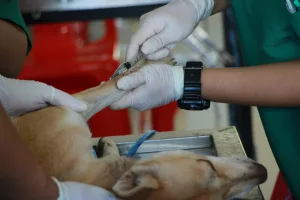Crabs possess a unique locomotion known as sidestepping, where they move in a sideways direction. This distinctive movement is primarily attributed to their anatomy, particularly the structure of their legs. The design of a crab’s legs allows them to move laterally with ease, using a specialized joint system that enables efficient sideways motion. One key aspect of how crabs walk sideways is their ability to manipulate their joints in a manner that propels them in a sideways direction. Their legs are oriented at an angle that facilitates this lateral movement, allowing them to navigate their environment with agility. The coordination of their multiple limbs and synchronization of movements play a crucial role in ensuring smooth sidestepping.
Understanding the Anatomy of Crab Legs
Crabs have ten legs, including a pair of pincers, known as chelae, which are primarily used for defense and feeding rather than locomotion. The remaining eight legs are structured to enable lateral movement. Each leg consists of several joints, similar to the segments of a human finger, which allow a wide range of motion. The primary joints responsible for sidestepping are located near the body, enabling the legs to swing outwards and then pull the crab sideways.
Joint Structure and Functionality
The legs of a crab are connected to the body by a set of joints that can move in a plane perpendicular to the crab’s body axis. This configuration is what allows the legs to extend sideways rather than forward or backward. The main joints involved in this movement are the coxa, basis, and ischium, which work together to facilitate the lateral swing of the legs. This unique joint arrangement is a key evolutionary adaptation that enables crabs to sidestep effectively.
The Role of Carapace in Crab Locomotion
Another factor that contributes to the sidestepping behavior of crabs is their exoskeleton, specifically the carapace. The carapace serves as a protective shield for the crab’s body, but it also plays a role in their locomotion. By anchoring their legs to the carapace, crabs are able to leverage this rigid structure to support their sideways movement, enhancing their ability to traverse various terrains.
Structural Support and Balance
The carapace provides a stable base from which the legs operate. This rigidity is crucial because it allows crabs to maintain balance as they move sideways, especially on uneven surfaces like rocky shores or sandy beaches. The carapace also helps distribute the crab’s weight evenly, preventing it from tipping over during rapid lateral movements.
Muscle Coordination and Propulsion Mechanisms
Crabs rely on intricate muscle coordination to execute their sidestepping gait effectively. The muscles in their legs contract and relax in a coordinated manner to generate the necessary propulsion for sideways motion. This complex interplay of muscular activity allows crabs to move laterally with precision and control, adapting to changes in their surroundings.
The Role of Flexor and Extensor Muscles
Within a crab’s legs, flexor and extensor muscles work in tandem to facilitate movement. When the flexor muscles contract, they pull the leg inward, while the extensor muscles straighten the leg. This coordinated muscle activity is what propels the crab sideways. The timing of these muscle contractions is crucial; any misalignment can disrupt the smooth sidestepping motion and potentially leave the crab vulnerable to predators.
Environmental Adaptations and Evolutionary Significance
The sideways walking behavior of crabs has evolved as an adaptive mechanism to their marine and terrestrial habitats. By moving laterally, crabs can navigate obstacles, evade predators, and forage for food efficiently. This specialized locomotion has become integral to their survival and reproductive success, highlighting the evolutionary significance of sidestepping in crabs.
Adaptations to Different Habitats
Crabs can be found in a variety of environments, from deep ocean floors to sandy beaches and even freshwater habitats. Each environment presents unique challenges that crabs must overcome. For instance, in rocky coastal areas, sidestepping allows crabs to quickly navigate around rocks and crevices, minimizing their exposure to predators. In sandy environments, the ability to move sideways helps crabs avoid sinking into loose substrates.
Real-World Examples of Crab Locomotion
To better understand how crabs utilize their sideways movement, let’s explore some real-world examples:
The Ghost Crab’s Speedy Sidestep
Ghost crabs are well-known for their incredible speed, capable of moving up to 10 miles per hour. This speed is achieved through rapid sidestepping, allowing them to quickly retreat to their burrows when threatened. Their pale coloration provides camouflage against sandy beaches, making their quick lateral movement an essential survival tool.
The Shore Crab’s Agile Maneuvering
Shore crabs, often found in intertidal zones, utilize their sidestepping ability to navigate around rocks and other obstacles. Their ability to move quickly and efficiently in a sideways direction enables them to forage for food and avoid becoming prey to shorebirds and larger marine predators.
Common Misconceptions About Crab Movement
There are several misconceptions about how crabs move, which can lead to confusion:
- Crabs Only Move Sideways: While crabs predominantly move sideways, they can also move forward and backward. However, forward and backward movements are typically slower and used less frequently.
- All Crabs Move at the Same Speed: Speed varies significantly among different crab species. Factors such as leg length, muscle strength, and habitat influence how fast a crab can sidestep.
- Sideways Movement is Inefficient: On the contrary, sidestepping is highly efficient for crabs, especially considering their body shape and the environments they inhabit. It allows them to cover ground quickly and with minimal energy expenditure.
Tips for Observing Crab Behavior
If you’re interested in observing crabs in their natural habitats, here are some tips to enhance your experience:
- Visit During Low Tide: Many crabs are more active during low tide when they come out to forage and interact with their environment.
- Stay Still and Quiet: Crabs are sensitive to vibrations and noise. By remaining still and quiet, you’re more likely to observe their natural behavior without scaring them away.
- Use Binoculars: If you’re observing crabs from a distance, binoculars can help you see their movements more clearly without disturbing them.
The Future of Research on Crab Locomotion
As our understanding of crab biology continues to grow, so does the potential for new discoveries. Future research may focus on the genetic factors that influence locomotion, the impact of environmental changes on movement patterns, and the development of robotic systems inspired by crabs’ efficient sidestepping.
Potential Applications of Crab Locomotion Research
Understanding crab locomotion can have practical applications beyond biology. Engineers and roboticists are exploring how the principles of crab movement can be applied to the design of robots, particularly those intended for navigating difficult terrains, such as search-and-rescue robots or planetary exploration rovers.
Insights from Comparative Studies
Studying crab locomotion alongside other arthropods, such as lobsters and shrimp, can provide deeper insights into evolutionary biology. While lobsters also possess the ability to move sideways, they tend to use a more straightforward approach due to their elongated bodies and different habitat needs. By comparing these species, researchers can further unravel the evolutionary pressures that led to such diverse locomotion strategies.
The Impact of Climate Change on Crab Locomotion
Climate change poses new challenges for crabs as their habitats undergo transformations. Rising sea levels and increased temperatures can alter the coastal environments where many crab species thrive, potentially affecting their ability to move and survive. Understanding how these changes impact crab locomotion can help in developing conservation strategies to protect these unique creatures.
Adapting to Shifting Environments
Some crab species might adapt by migrating to new areas or altering their behavior to cope with changing conditions. Research into these adaptive strategies can illuminate how crabs might continue to thrive in a rapidly changing world. For instance, some crabs may develop stronger limbs to tackle more turbulent waters or learn to navigate new types of vegetation on shifting shorelines.
Technological Innovations Inspired by Crabs
The efficient sidestepping of crabs has inspired innovations in technology, particularly in robotics. By mimicking the joint structures and muscle coordination of crabs, engineers are developing robots that can navigate complex terrains with ease. These robots could be used in various applications, from underwater exploration to disaster response, offering a glimpse into the practical benefits of studying crab locomotion.
Engaging with Crabs: Educational Opportunities
Crabs offer a fantastic opportunity for educational programs aimed at teaching children and adults about marine biology and the importance of biodiversity. Interactive exhibits in aquariums and marine centers can showcase crab locomotion, allowing visitors to observe these creatures up close and learn about their ecological roles.
Citizen Science and Crab Research
Encouraging community involvement in crab research through citizen science projects can expand our understanding of these creatures. By documenting crab behaviors and movements, enthusiasts can contribute valuable data to scientific studies, helping to track changes in populations and movements over time.
Practical Tips for Crab Enthusiasts
For those with a keen interest in crabs, there are numerous ways to engage with these fascinating animals:
- Join a Local Marine Biology Group: Many communities have groups dedicated to marine life study, offering opportunities to learn more about crabs and participate in research projects.
- Create a Crab-Friendly Garden: If you live near the coast, consider creating a garden that mimics a natural coastal habitat, attracting crabs and other marine life.
- Volunteer at a Marine Center: Many aquariums and marine centers welcome volunteers to help care for their marine exhibits, offering a hands-on way to learn about crabs and other sea creatures.
By exploring the world of crabs, not only do we gain insight into one of nature’s most efficient movers, but we also open the door to a deeper appreciation of the diverse and interconnected web of life that thrives within our planet’s oceans and shorelines.



